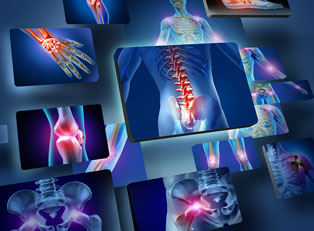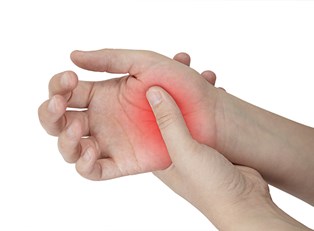Because physicians aren’t quite sure what causes juvenile rheumatoid arthritis (JRA)— also called juvenile idiopathic arthritis (JIA)—there is no clear way to prevent this chronic condition that affects almost 300,000 American children aged 18 and younger. There is also no cure for JIA. The good news, however, is that juvenile rheumatoid arthritis is not life-threatening. It is treatable, and it usually resolves before a child reaches adulthood if managed aggressively.
Rheumatologists at Boston Children’s Hospital suggest that JIA affects girls at least two times more often than boys, and two- to three-year-olds are at the greatest risk for developing juvenile idiopathic arthritis.
Your child’s prognosis depends on several factors including:
- how soon your child is diagnosed.
- how aggressive the treatment is.
- the type of JIA your child has.
- the number of joints affected.
There are several sub-types of this condition, and symptoms and the degree of severity differs. The Arthritis National Research Foundation (ANRF) reports that there is an apparent a link between the number of joints involved and the severity of the disease and that this connection also seems to impact the likelihood of achieving total remission.
Juvenile idiopathic arthritis is regarded by experts as a disease that is altogether independent from adult rheumatoid arthritis. It is treated with much more aggression because of the devastating impact it can render to developing bones. JIA, as well as certain medications used in treatment, can retard growth.
Treatment Goals
Typically, the aim of juvenile idiopathic arthritis treatment targets the following objectives:
- control and minimize symptoms
- prevent joint, tissue, and bone damage
- improve and maintain mobility, function, and quality of life
Treatment Teams
Because JIA affects many critical areas, treating juvenile idiopathic arthritis may require the expertise of several specialized healthcare practitioners.
In most cases, a child’s pediatrician will refer the patient to a pediatric rheumatologist, who will diagnose and manage the disease. A pediatric rheumatologist is a doctor who specializes in treating rheumatic diseases in children. If skeletal damage has occurred, an orthopedic surgeon may join the child’s team of specialists and perform corrective surgeries, if needed.
If a child’s type of JIA involves the eyes, a pediatric ophthalmologist may be consulted to manage any ocular inflammation. Sometimes, children experience skin rashes, such as psoriasis, so these patients would also be referred to a dermatologist. Other children experience resulting gastrointestinal issues that may affect nourishment and necessitate the aid of a gastroenterologist, a nutritionist, and perhaps even a dentist.
Nearly all children with juvenile idiopathic arthritis also require physical and occupational therapies, which help to maintain and improve strength, function, and mobility. Therapists might also design splints to help with development and mobility.
Additionally, a social worker will likely assist with coordinating your child’s overall case and at-home therapies as well as accommodations needed at school. A psychologist takes into account the toll juvenile idiopathic arthritis has on a child’s psychological well being and will help your child cope with their disease.
It is important to allow children who suffer from JIA to have active, healthy, and normal lives as much as possible. These are children who will grow into adulthood and should be given room to develop active social lives ad engage in independent activities, such as participating in extracurricular activities, learning to drive, and even holding a job. Additionally, summer camps and support groups can help facilitate interaction between your child and other children who have JIA.
Medications
- Non-steroidal anti-inflammatory drugs (NSAIDs) are given as a first line of treatment to reduce inflammation and help with pain management.
- Disease modifying drugs (DMARDs), also called biological modifying agents, are used as a second line of treatment when NSAIDS prove ineffective.
- Steroid injections into the affected joint can provide pain relief. These may be used when children has single joint involvement.
- Corticosteroids, such as prednisone, are effective in reducing severe inflammation and pain, but they are only used when absolutely necessary because the side effects can be devastating. Oral steroids can hinder growth, weaken bones, and suppress the immune system, among other undesirable effects.
Family Considerations
Having a child in the family who suffers from juvenile rheumatoid arthritis can impact caregivers and siblings too. The stress of caring for a chronically ill child can, over time, impact your own health. It may be beneficial to seek out a support group for yourself as well as your child.
Siblings are also affected by a child's JIA. Their needs can be unintentionally minimized or overlooked when a chronically-ill child requires a great deal of care and attention. They may need support, recognition, and perhaps special dates with mom and dad now and then.




